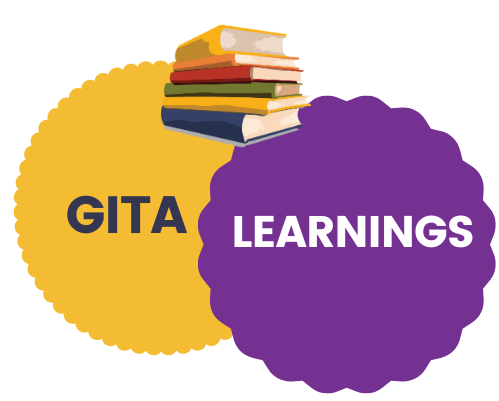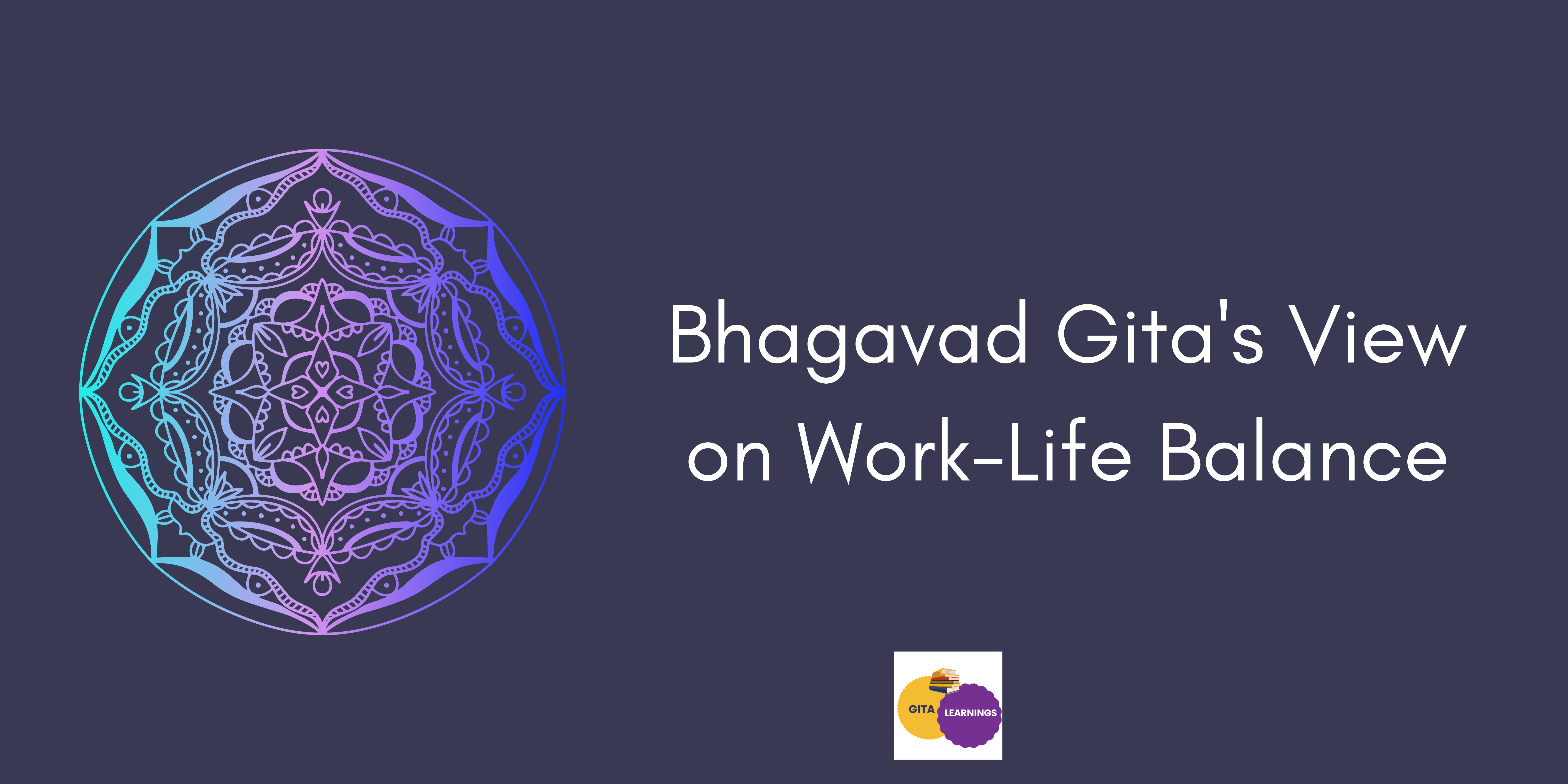Discover how the Bhagavad Gita’s timeless wisdom illuminates the path to achieving harmony between work, family, and personal growth in the modern world. Uncover actionable insights for a balanced and fulfilling life.
The hustle and bustle of modern life often leaves us grappling with the challenge of maintaining a healthy equilibrium between our professional commitments, familial responsibilities, and personal aspirations. In the quest for this elusive balance, the timeless teachings of the Bhagavad Gita, an ancient Indian scripture, offer profound insights.
This spiritual masterpiece guides self-realization and imparts wisdom on navigating the intricate interplay between work, family, and personal growth. Let’s delve into Gita’s illuminating perspective on achieving harmony in these crucial aspects of life.
The Bhagavad Gita is not just a spiritual scripture but a profound guide that offers valuable insights into various aspects of human life. One of the most crucial areas it addresses is the work-life balance predicament faced by individuals across cultures and eras. Gita’s teachings, although ancient, hold striking relevance in the contemporary world, where the demands of a fast-paced lifestyle often lead to burnout and a sense of disconnect.
Understanding the Essence of the Bhagavad Gita
The Bhagavad Gita is a dialogue between Lord Krishna and the warrior prince Arjuna on the battlefield of Kurukshetra. Beyond its religious significance, the Gita encapsulates universal truths about human nature, duty, and spirituality. At its core, the Gita emphasizes the concept of Dharma, which is the righteous path aligned with one’s duty and responsibilities.
Work and Duty According to the Gita
The Gita teaches that individuals should perform their duties diligently without being attached to the results. This principle encourages a sense of responsibility and commitment while detaching from the outcomes, reducing the burden of stress and expectations. Applying this philosophy to the realm of work helps individuals engage in tasks with sincerity, contributing to a healthier work environment.
Detachment and Devotion in Work
The Gita advocates for a unique blend of detachment and devotion to work. By performing our responsibilities with a sense of detachment from personal gains, we cultivate a mindset focused on the task at hand rather than extraneous distractions. This not only enhances efficiency but also fosters a sense of inner tranquility.
Balancing Family and Work Commitments
The Gita’s teachings guide us to balance familial duties and professional responsibilities. Treating both as sacred duties and aligning them with Dharma can minimize the conflict between these two integral aspects of our lives. This approach promotes a harmonious atmosphere at home and in the workplace.
The Role of Mindfulness in Achieving Balance
Mindfulness, a practice endorsed by the Gita, is pivotal in achieving work-life balance. The Gita encourages us to focus on the present moment, fostering a state of mindfulness that enhances our concentration, reduces stress, and improves decision-making. This, in turn, allows us to give our best to both work and personal interactions.
Managing Stress and Challenges
In the face of challenges and stress, Gita’s teachings offer solace. Individuals can navigate difficulties with equanimity by cultivating a resilient mindset and trusting in the divine order of the universe. This perspective prevents stress from becoming overwhelming and obstructing our ability to maintain balance.
Nurturing Personal Growth
The Bhagavad Gita inspires holistic personal development. It encourages individuals to explore their passions, talents, and interests alongside their professional responsibilities. By dedicating time to personal growth, individuals enrich their lives and bring newfound enthusiasm to their work and relationships.
Living in the Present Moment
The Gita emphasizes the importance of living in the present moment, removing the burdens of past regrets and future anxieties. This practice frees us from the mental clutter that hinders our ability to juggle work and personal life effectively, allowing us to fully engage in whatever we do.
Conclusion
In a world where the pursuit of balance between work, family, and personal aspirations is a perpetual challenge, the Bhagavad Gita offers invaluable guidance. Its teachings encourage a holistic approach to life, urging us to perform our duties with dedication, cultivate mindfulness, and embrace the journey of personal growth. By internalizing these teachings, we can navigate the complexities of modern life while maintaining a harmonious equilibrium.
FAQs
1) Can the Bhagavad Gita’s teachings be applied to different cultures and work environments?
Ans – Yes, Gita’s teachings transcend cultural boundaries and are adaptable to various work settings.
2) How does detachment contribute to work-life balance?
Ans – Detachment from outcomes reduces anxiety and helps focus on the present moment, enhancing balance.
3) Is achieving a perfect work-life balance realistic?
Ans – The Gita doesn’t prescribe perfection but emphasizes the journey toward balance as essential.
4) Can individuals of all ages practice Gita’s principles?
Ans – Absolutely, Gita’s wisdom is timeless and relevant to people of all age groups.
5) Where can I learn more about applying Gita’s teachings to modern life?
Ans – Incorporating the Bhagavad Gita’s teachings into our lives allows us to transcend the limitations of a chaotic world and attain a state of equilibrium where work, family, and personal aspirations coexist harmoniously. We embark on a transformative journey toward a balanced and fulfilling life by aligning our actions with the principles expounded in this ancient scripture.

